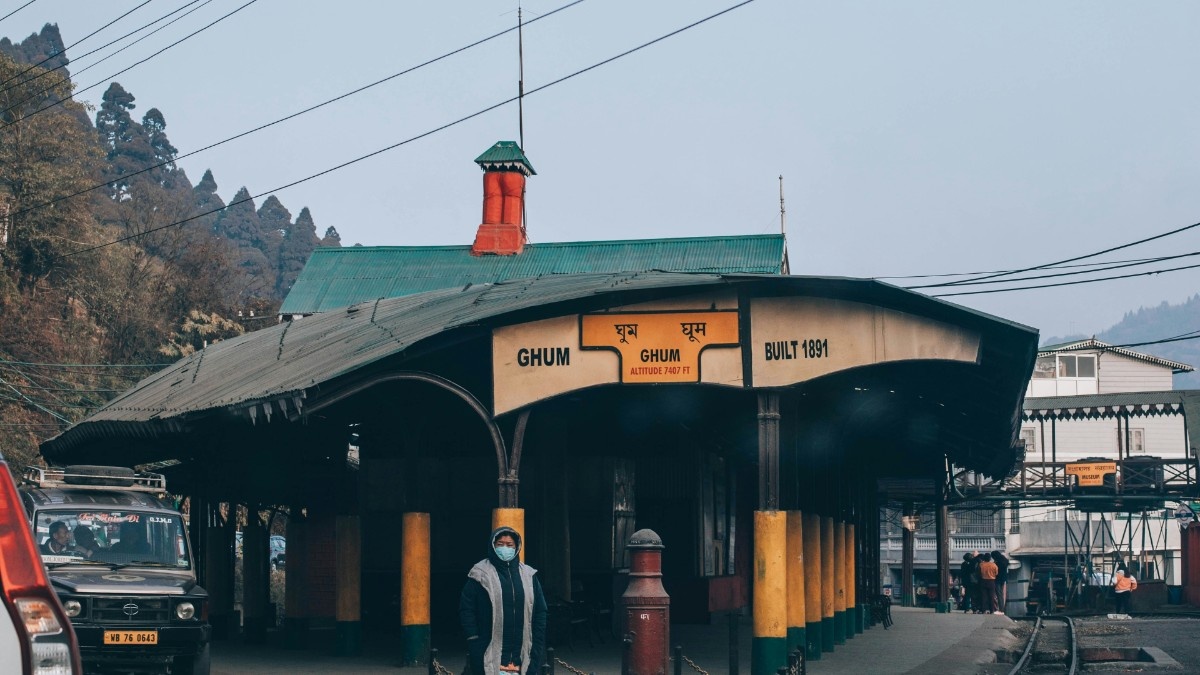Darjeeling, often called the Queen of the Hills, is more than just its iconic tea gardens and panoramic viewpoints. This small hill town in the Eastern Himalayas is shaped by its people — Nepali-speaking communities, warm market vendors, Buddhist monks, and tea garden workers who bring life to every slope.
Beyond the usual trail lies a slower, more meaningful Darjeeling — one rooted in culture, ritual, and everyday beauty.
How to Experience Darjeeling Authentically
Start your mornings early. The air is crisp, and the hills are alive with birdsong and prayer flags. Walk through a tea estate and watch local pickers work with quiet rhythm. Stop at a street-side stall for hot sel roti or join a local for sweet milk tea and conversation.
Markets like Chowk Bazaar offer more than souvenirs — they’re windows into how the community lives, cooks, and celebrates. It’s here that Darjeeling reveals its soul.
Places to Visit
- Tiger Hill – Watch the first light hit Mt. Kangchenjunga.
- Batasia Loop – A railway spiral with memorial gardens and sweeping views.
- Darjeeling Himalayan Railway (“Toy Train”) – A UNESCO-listed heritage train.
- Ghoom Monastery – Peaceful and historic, with chanting monks and mountain air.
- Peace Pagoda – A space for reflection, built by the Japanese Buddhist order.
- Observatory Hill – A sacred spot for both Hindus and Buddhists.
What to Eat and Celebrate

Darjeeling’s food reflects its roots — part Nepali, part Tibetan, part Bengali.
- Momos – Steamed dumplings, served with spicy chutney.
- Thukpa – A warming noodle soup with vegetables or meat.
- Sel Roti – A fried rice-flour ring, often made at home during festivals.
Major festivals include:
- Dashain – Celebrated with family feasts and temple visits.
- Tihar – A five-day festival honoring crows, dogs, cows, and siblings — with lights, songs, and sel roti everywhere.
Culture and Local Life
- Language: Nepali is the most widely spoken. You’ll also hear Hindi, Bengali, and Tibetan.
- Community: Life is local. Most shops are family-run. People know their neighbors. Visitors are welcomed — softly, not showily.
- Daily rhythm: Mornings are quiet, markets pick up by mid-morning, and mist settles in by evening.
Travel Tips

- Dress modestly at monasteries and temples.
- Ask before taking photos of people or shrines.
- Carry some cash — not every café takes UPI.
- Pack layers — sun and fog can alternate within the hour.
- Walk slowly — steep lanes and altitude deserve patience.
Did You Know?
Darjeeling tea estate tours is protected by a Geographical Indication (GI) tag, meaning true Darjeeling tea can only come from select estates in this region. Its flavor depends on the altitude, soil, and hand-plucking methods that haven’t changed for generations.
Gently Explore
If Darjeeling feels like a place, you’d want to experience a little differently — with space to slow down and connect — we’re here to help when you’re ready.
Our trip ideas, tips, and stories are always available to guide your way.



 in Bengaluru
in Bengaluru